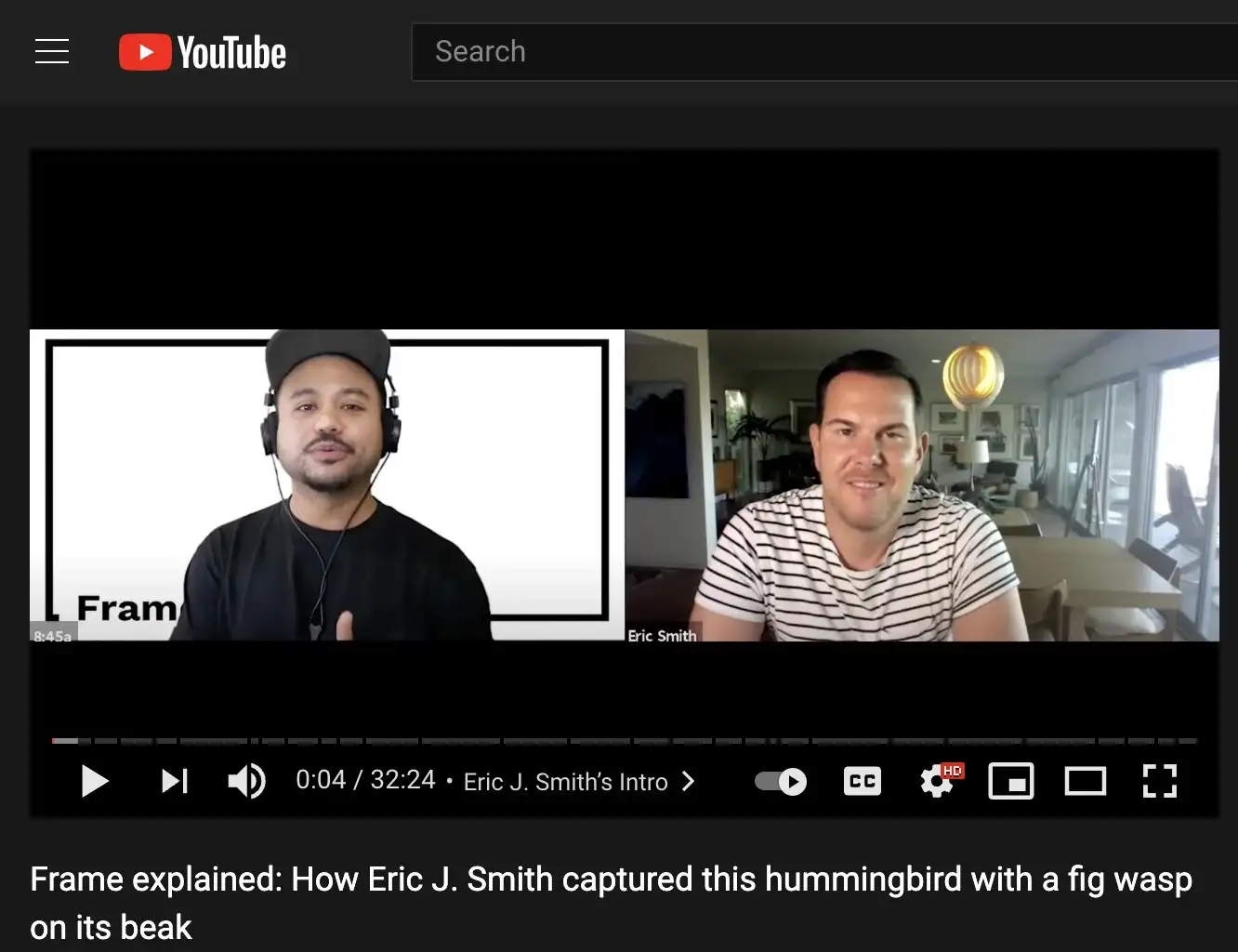JJ Casas
San Francisco-based portrait & commercial photographer &
creative director.
Sharing my thoughts as a photographer, cinematographer, marketer, and copywriter.
JCasas Photography | The Blog
© 2025 JJ Jumoc-Casas
jcasasphotography.com
3 ways to mess up when interviewing someone
-
Giving audio cues instead of verbal ones
-
Asking more than one question at a time
-
Steamrolling onto the next question without reacting to the previous answer
Keep reading to find out which two of the three I committed.
I started a YouTube series called Frame explained where I break down images. Its ultimate goal is to learn more about how an image was made and who made it. While my initial episodes were of myself breaking down my own images, I had my first guest a couple weeks ago.

And I’m essentially now coaching myself too.

Here’s 3 ways to NOT mess up an interview you’re conducting (whether you’re on camera or not):
-
Give visual cues to let the person know you’re listening instead of verbal ones
When we normally talk to others, we typically will say “mm hmm”, “definitely!”, “right” or some other audio cue to let the person know you’re listening. However, in recorded interviews, this is the worst.
Not only will the microphone will pick up your voice during your interviewer’s answer, your interviewee can get distracted from your responses.
Not giving auditory cues also helps in post production: you always want to have room to cut out/connect sentences together so ensuring that their audio is clean without interference makes it much easier to do so.
Instead of auditory cues, give visual ones instead to still show you’re listening:
-
Head nod
-
Smile
I’m already used to doing this because I’ve done so many interviews in which I’ve edited myself — a quiet room with clear audio of interviewee is always the preferred working space in the editing room.
Quick tip: If you want to interject or follow up with a question, I’ve noticed that having a puzzled look while holding your finger in the air and waiting will cue the interviewee to wrap up their answer sooner for you.
While the following two doesn’t matter as much in videos where you can cut yourself out, it matters a whole lot when you’re also in the video.
Here’s what I didn’t do:
2. Ask one question at a time
After watching my interview (and remember, my voice and image are in this one), I kept cringing at how I was asking my questions. While I had a list of questions to ask after doing my research, I somehow kept elaborating after asking the initial question.
For example, if I was asking the subject “What is your favorite burger?”, it should literally be just that — “What is your favorite burger?” and let the interviewee take his/her time to respond.
Instead, I did the equivalent of the following:
“What is your favorite burger? —Does the bun have to be a brioche or have sesame seeds?Do you prefer your meat medium rare or well done —So tell me, what is your favorite burger?”
Just ask one question clearly once and let the interviewee answer.
3. Respond to the interviewee’s answers before moving on to the next question
I noticed in my interview that I was saying “Right on” after he finished his question — and here’s the thing: I hardly say “right on” in my normal conversations! And to make it worse, after saying that I just moved on to the next question.
Don’t do this as your subject just feels like you’re steamrolling through your questions you wanted to ask and not listening at all to the answer itself.
Even if you may not add anything substantial, you can keep the flow going by acknowledging the answer in your reply which lets the interviewee know you were listening all along.
For example, if she answers “Creating donuts from scratch is definitely harder than making cakes” after you asked which is harder to make, you can respond with any of the following:
-
“Even though it’s harder to make, I assume it’s far more rewarding to make donuts than cakes.” — this response simply acknowledges what she said and adding “I assume” will allow the her to simply nod and agree to move on or give her a chance to correct you.
-
“Well I can’t imagine making either as they both seem hard to me. But you saying donuts are harder at least makes me believe I’ll fail less with cakes.” — a self-deprecating answer with humor can work if you can pull it off. Answers like this puts you back in the conversation but allows you to flatter her (who doesn’t like to be flattered?). Plus, you allow her to continue to be the expert which could allow for a quick side conversation for more tips/insight
-
“Well now I’m curious: what exact part/moment of making donuts would you say makes it harder than cakes?” — it is a second question but again, now you’re investigating at this point which clearly lets her know you’re listening and want to know more.
Point is: don’t give a canned expression as your only reply.
I hope this helps you in your next interview that you conduct whether you’re actually part of the video or not.
And if you wanted to hear my conversation despite my mistakes with Eric on how he captured his award winning photo of a fig wasp on a hummingbird’s beak that he named Herb, please watch here.
Don’t forget to Like and subscribe for me ;)
